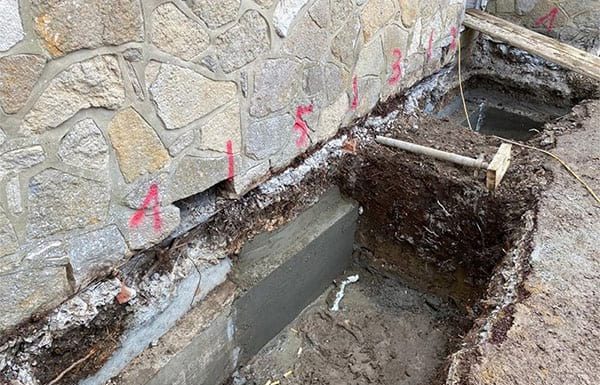
In structural or renovation, is really the whole process of tying down the core of an existing structure to the earth. It will prevent the structure being moved by wind and earthquake pressure. However, tying down is not as simple as it sounds. It is essential that the foundations be strong enough that the earth’s forces will not cause it to move or be affected. It is also important that it is sturdy enough for it to withstand any wind pressure that may occur. It is important to overcome foundation and underpinning issues in order to have a structure that lasts for many years, or even decades.
Foundation strengthening is important because of the many other problems that could happen to a building. If a structure becomes unsteady because the ground is shifting or the foundations are getting damaged, the whole structure can easily collapse or tip over. A structural engineer can help you avoid this from happening to your house or office building. They will determine how best to strengthen the foundations so that they can last for long enough. Below are some of the things that they would explain to you about how best to strengthen the foundations of the building:
* Foundations can fail because of movement. Underground soil movement may cause shifts in soil around foundations. Because of soil movement, the footings are often the first to suffer from movement. As the soil moves more, the pressure on the footings will increase, which will cause them to weaken further until eventually they collapse. It is crucial to have a solid foundation before you start digging the soil or laying the foundations. This will prevent weakening and collapse of the footings. This is why it is best to have your footings in place before you start anything else.
* Subsidence testing is a different method that structural engineers use. This method uses the concept of environmental risks when determining whether or not the foundation will sink or if it will be buoyant. Using the Environmental Protection Agency’s (EPA) guidelines on what is underpinning, the soil density and thickness are testing to check for signs of subsidence. The foundation’s stability and sinking ability will be determined by the soil density and its depth. There could be more problems if the soil density is too low or foundations become unstable.
* After the subsidence test has been conducted, the cracks will then be treated. The cracks will be fixed using a special mixture of cement and filler. Cracks should not be deeper than the surrounding soil. Otherwise, they will fill in space and become invisible. You can also bore the cracks manually with a heavy machine to determine if they are getting deeper but still not visible. Bored or damaged cracks will have to be replaced with new ones.
* There are two main options for finding a new underpinning. Either dig a trench to install a foundation or install a floor, wall or roof over the existing foundation melbourne underpinning. There are two options when installing a new foundation: dig a trench and install it, or you can put a new floor, wall, or roof over your existing foundation. First, do your walls and flooring need to be placed on concrete slabs or blocks? The answer for this question will determine what is underpinning and whether you need a different method.
* The second option is to install stronger structural supports beneath the soil. Engineers will often dig deeper feetings and put thicker footings in areas with rapid soil movement. They will also check the soil for movement and make the necessary adjustments. What is underpinning then again is determined by what is surrounding the soil – if the ground is thin and sandy, for instance, footings will need to be deeper and the soil will therefore be more flexible.
Both of these options will depend on the type of soil beneath the foundation and the location thereof. In areas where soil movement is infrequent and not much of a problem, concrete underpinning will work fine. On the other hand, in more severe areas that experience shifting or sliding very frequently, such as coastal areas, clay or sandy soils may require stronger support. Cracks in the footings could indicate structural weakness and should be addressed. A deeper footing is recommended if soil pressure is increasing. Talk to a respected engineer to learn more about the foundation of your building.

